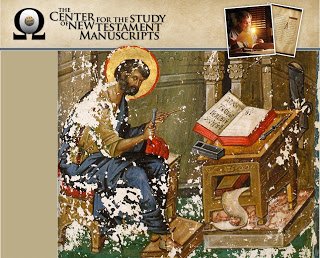Can We Trust the Biblical Text?
Dr. Dan Wallace, founder of the Center for the Study of New Testament Manuscripts, recently spoke in the issues track at the Evangelical Press Association national convention. Wallace debated Ehrman in a major forum, and spends his life (when not teaching grad-level Greek) finding and photographing ancient manuscripts. He also wrote the Greek textbook used in Ivy League intermediate Greek classrooms. Wallace noted that Ehrman is the number one source for Muslims intellectually going after Christianity.
Wallace also said our approach to text criticism must be neither the despair of postmodernism (“We’ll never have the original”) nor the absolute certainty of modernism (“We can get back to the exact word-for-word text”).
Three key questions to answer are:
1) Quantity: How many scribal alterations are there (deviations from text in spellings, additions—even if they’re of no consequence)?
2)Quality: What kinds of textual variants are there?
3)Orthodoxy: What theological beliefs rest on theologically suspect passages?
Ninety-nine percent of the variants are spelling differences (think color and colour). John spelled the same word three different ways within a few verses. (They didn’t have Webster’s Koine Greek Dictionary to regulate spelling.) Then we have changes such as Jesus as “Lord” changed to Jesus as “Christ” and vice versa.
Next, we have variants that are meaningful but not reliable, such as the manuscript that has “We became gentle horses among you” where the others say, “We became gentle among you” or “We became children among you.” Just one letter is responsible for these changes in meaning.
There are 140,000 words in the New Testament and 400,000 variants. But that’s because we have numerous manuscripts—more than 5,700 in Greek totaling 2.6 million pages, with an average length of 550 pages; an additional 10,000 Latin manuscripts; and another 5,000 to 10,000 Georgian, Gothic, and Armenian manuscripts. (When we say we have 400,000 variants, we’re not saying we have that many in a single manuscript!) Add to this another million lines of quotations of the New Testament by church fathers. Compare all this with the average for the classical Greek writers I’ve been reading for my PhD program—fewer than 200 copies in existence. Amazingly, not once has anyone ever said to me, “You’re reading Pausanias? I wouldn’t trust that text. We have fewer than 500 extant copies.”
The smallest group of variants is meaningful and viable—is the number of the anti-Christ 666 or 616, for example. Fewer than 1% of variants fall in this group. And, “No essential Christian belief is affected by any viable variant,” Wallace said. No, not one.
